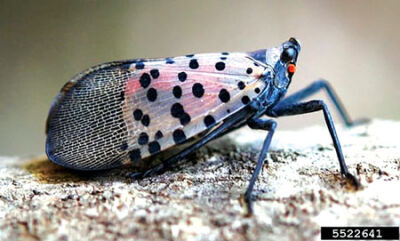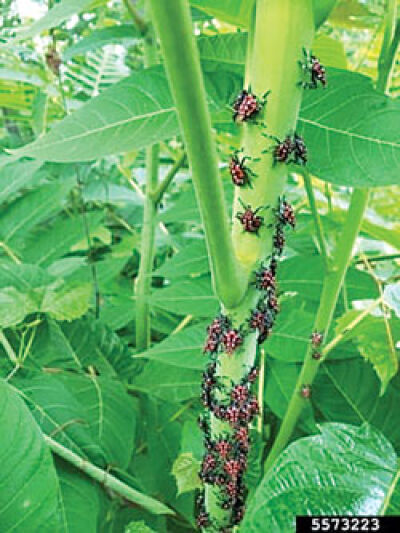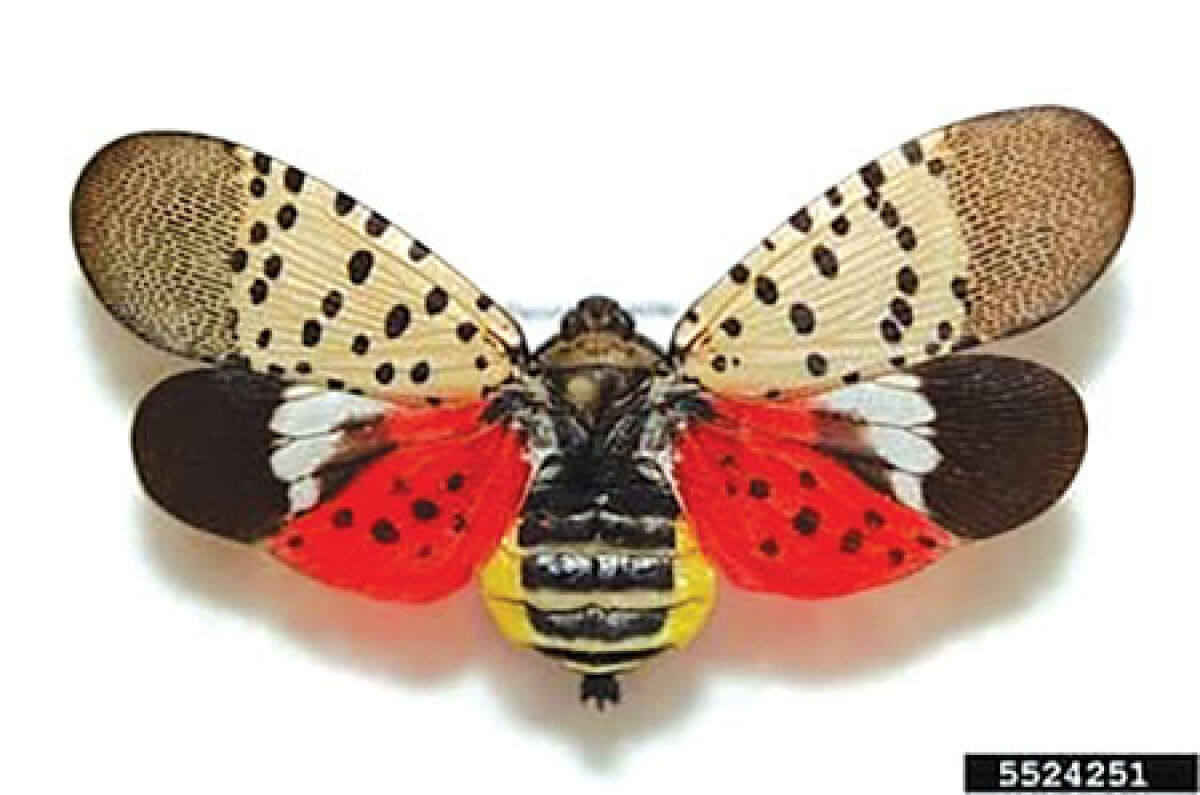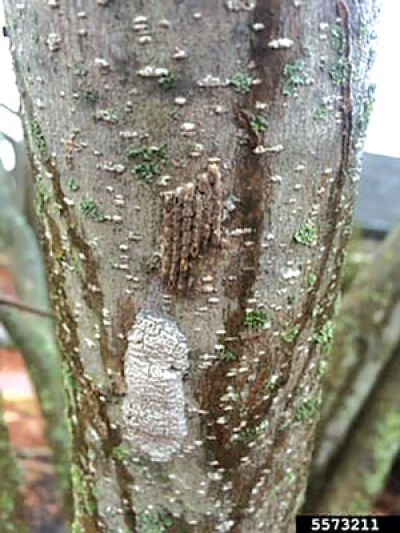
An adult spotted lanternfly with its wings folded. Folded wings are gray to brown with black spots.
Photo provided by the Lawrence Barringer, Pennsylvania Department of Agriculture, Bugwood.org

Spotted lanternfly juvenile stages.
Photo provided by the Emelie Swackhamer, Penn State University, Bugwood.org
OAKLAND COUNTY — An invasive bug that poses a threat to the state’s fruit crops has made its way to Michigan.
The spotted lanternfly, which originates from China, reportedly first appeared in the United States in Pennsylvania in 2014, and the invasive insect has since spread across many states. The bugs are known to be an agricultural threat, particularly to grape harvests and fruit trees, according to the U.S. Department of Agriculture.
“The biggest concern is that it will feed on a wide range of plants, including grapes, which are primarily the fruit they impact the most. It has suctioning mouth parts, so it sucks the juice out of the vine and then leaves a moldy substance behind that kills the vine,” said Jennifer Holton, the communication director for the Michigan Department of Agriculture and Rural Development.
A “small population” of spotted lanternfly was recently found in Michigan — specifically in Pontiac — which the U.S. Department of Agriculture confirmed is the first case of live spotted lanternfly in the state.
“Spotted lanternflies have been in the U.S. since 2014, so it’s not unexpected. It’s certainly disappointing, but it’s not unexpected, given that they have definitely been in and around the state of Michigan for quite some time,” Holton added. “We are, I believe, the 13th state that has been impacted by spotted lanternfly.”
The Michigan Department of Agriculture and Rural Development’s Pesticide and Plant Pest Management Division surveyed the initial area and determined the spotted lanternfly population is “mostly contained” to a small, wooded lot owned by Oakland County.
While surveying, Michael Philip, Pesticide and Plant Pest Management Division director within the Michigan Department of Agriculture and Rural Development, said inspectors discovered “a significant, but isolated grouping” of invasive tree-of-heaven, which he said is the much preferred host of spotted lanternfly.
“Given the strong preference of spotted lanternfly to feed on the tree-of-heaven and the solitary nature of the stand, MDARD is hopeful the population can be contained,” Philip said in a statement.
To limit the spread of spotted lanternfly, the Michigan Department of Agriculture and Rural Development is working with Oakland County.
Oakland County Water Resources Commissioner Jim Nash said his team’s priority is working alongside the Michigan Department of Agriculture to protect the agriculture, natural resources and environment both in Oakland County and across the state.
“We hope to limit the spread of this invasive population of spotted lanternfly by using targeted pesticide applications and tree removal,” he said in a statement.
Philip said officials have already completed pesticide applications of the impacted area.
Spotted lanternfly moves easily on firewood, tires, campers, vehicles and more.
“It cannot fly very well, but it can be transported quite easily on a variety of things, whether it’s campers, car tires or firewood. Firewood is a primary factor for transporting all kinds of potentially invasive and non-native species and diseases throughout Michigan, so we always encourage folks to not bring firewood from home, or wherever else they may be traveling,” Holton explained.
The spotted lanternfly, MDNR officials say, has the potential to affect over 70 plant species in Michigan, including some species of hardwood trees and agricultural crops like grapes, apples and hops.
The invasive insect sucks sap from host plants and secretes large amounts of a sugar-rich, sticky liquid called honeydew that supports the growth of a black fungus known as sooty mold. In large amounts, officials say, honeydew and sooty mold can kill plants; damage crops; foul outdoor surfaces like decks, siding and cars; and attract hornets, wasps and ants.
Prevention and early detection are vital to limiting the spread of the invasive insect, which has a life stage that includes nymphs, one that resembles beetles and finally results in adult leafhoppers.
“Right now, they are pretty much contained in Oakland County, so we’re hoping to keep it that way,” Holton said.
If you think you have found a spotted lanternfly egg mass, nymph or adult, state officials are asking you to take one or more photos, make note of the date, time and location of the sighting, and report it online to “Eyes in the Field” at https://www2.dnr.state.mi.us/ORS/Survey/38.
“Please upload photos, because there are a lot of look-alikes that are not the spotted lanternfly,” Holton said.
State officials are also asking the public to crush spotted lanternfly nymphs and adult insects and to scrape egg masses into a plastic bag containing hand sanitizer or rubbing alcohol to kill them.
For more information, visit www.michigan.gov/spottedlanternfly.
 Publication select ▼
Publication select ▼



























